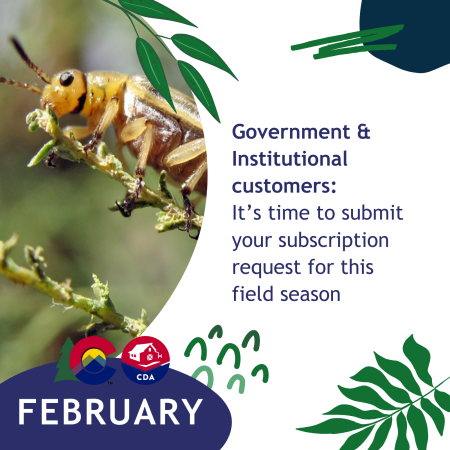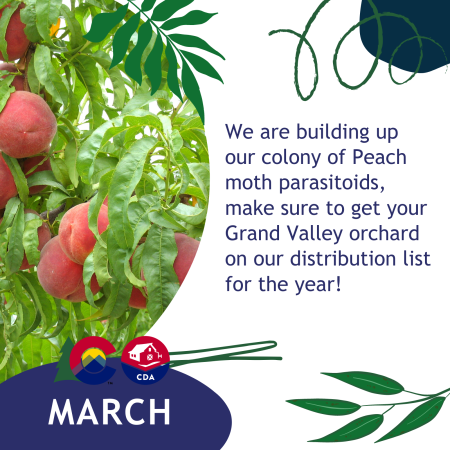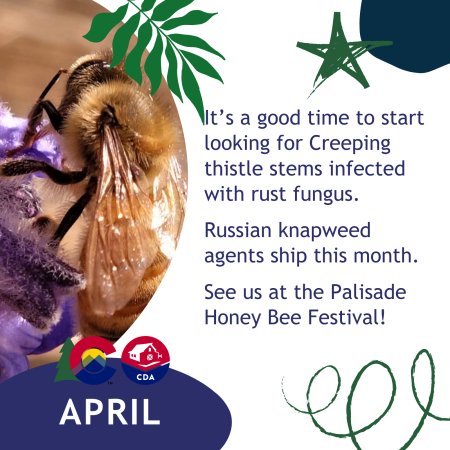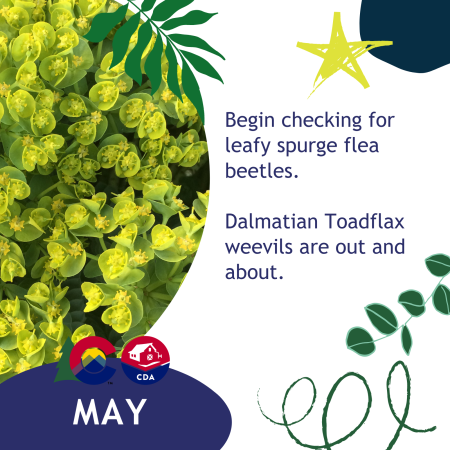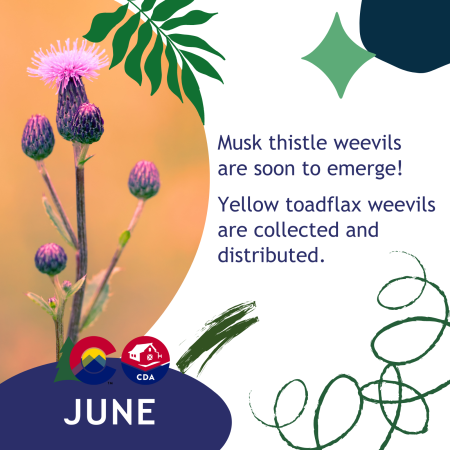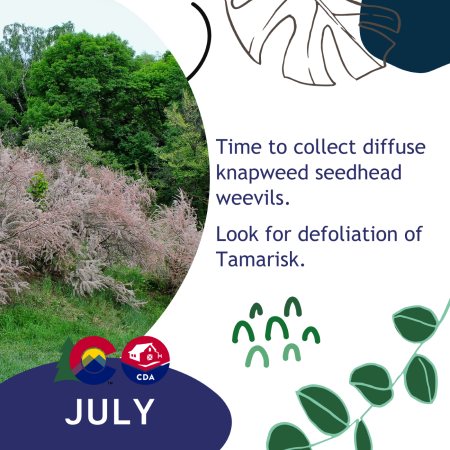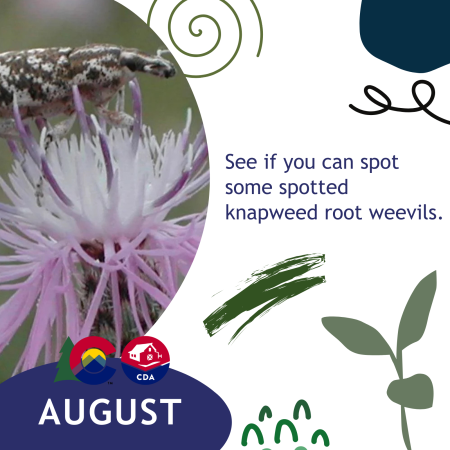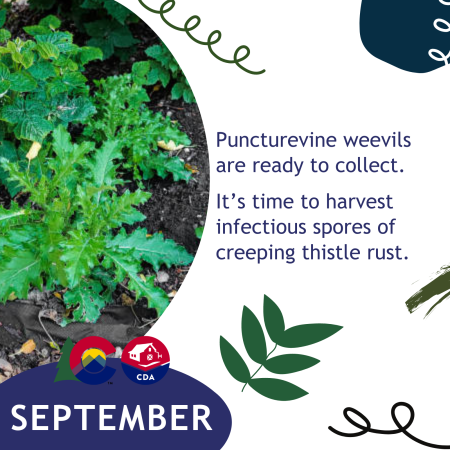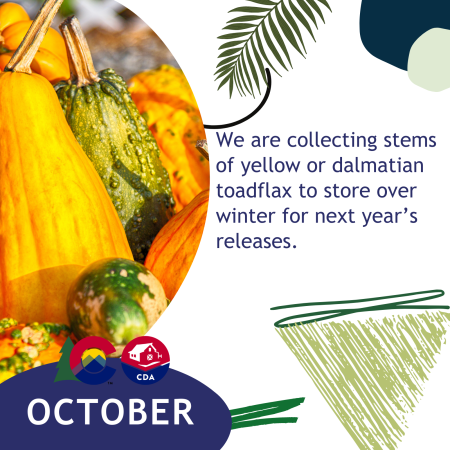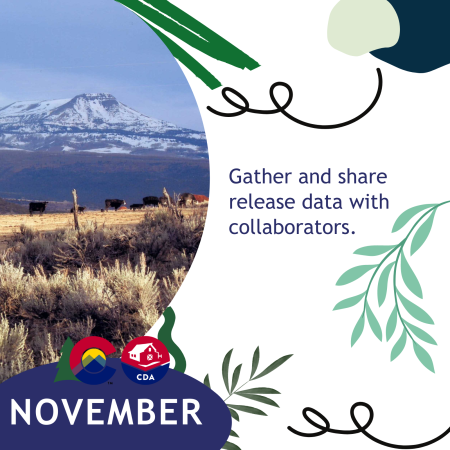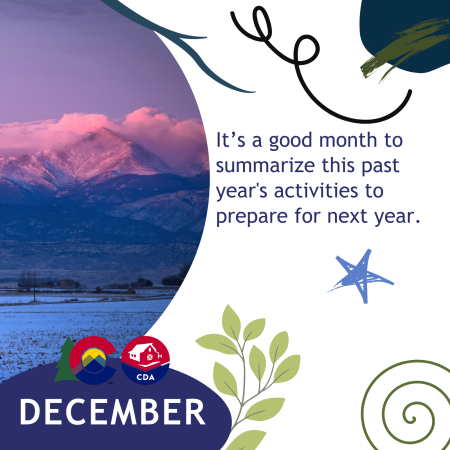Biological control is a method of pest management that uses the natural enemies of weeds or pests. The Palisade Insectary imports, raises, researches, and distributes biological controls for the state of Colorado. Successful biological pest control does three things. It reduces costs and cuts down on the amount of chemicals entering the environment. It also establishes helpful insects for a natural, permanent pest control choice. More than 90 insects and fungi have been studied and released for use since the Insectary was started in 1945.
What's Happening
Our tours are now booked up through April 2024. They will resume again in September 2024. Call to arrange your tour at 970-464-7916, ext. 0.
Did you know that the Palisade Insectary is the premier lab in the U.S. to raise Ceratapion basicorne? These are the weevils that attack the noxious weed yellow star thistle. We are gearing up for a mass rearing with the goal of sending weevils to western states in Spring 2024.
The Palisade Insectary by month
January
Start off the year by making plans for this year's field season and get on request lists early.
February
Government & Institutional customers: It’s time to submit your subscription request for this field season
March
We are building up our colony of Peach moth parasitoids, make sure to get your Grand Valley orchard on our distribution list for the year!
April
It’s a good time to start looking for Creeping thistle stems infected with rust fungus. Russian knapweed agents ship this month. See us at the Palisade Honey Bee Festival!
May
Begin checking for leafy spurge flea beetles. Dalmatian Toadflax weevils are out and about.
June
Musk thistle weevils are soon to emerge! Yellow toadflax weevils are collected and distributed.
July
Time to collect diffuse knapweed seedhead weevils. Look for defoliation of Tamarisk.
August
See if you can spot some spotted knapweed root weevils.
September
Puncturevine weevils are ready to collect. It’s time to harvest infectious spores of creeping thistle rust.
October
We are collecting stems of yellow or dalmatian toadflax to store over winter for next year’s releases.
November
Gather and share release data with collaborators.
December
It’s a good month to summarize this past year's activities to prepare for next year.

